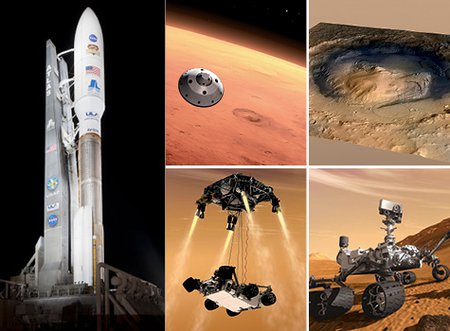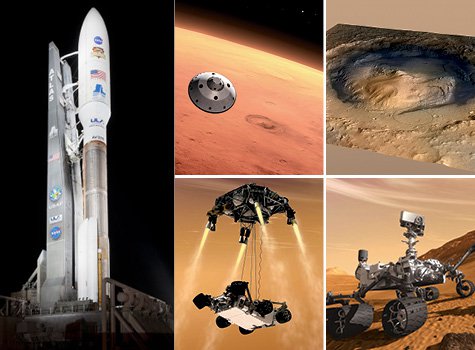After journeying more than 340 million miles over the course of eight months, NASA's Mars Science Laboratory (MSL)—the most capable robotic mission ever sent to the Red Planet—is quickly approaching its destination. The spacecraft is scheduled to touch down on the evening of August 5. If all goes smoothly, mission control at the Jet Propulsion Laboratory (JPL) will receive confirmation of the rover's landing at around 10:31 p.m. (PDT).
After an action-packed entry, descent, and landing, the car-sized rover, named Curiosity, will be poised on all six wheels inside Gale Crater, an ancient impact crater just south of the Martian equator. Roughly the size of the Los Angeles Basin—at 154 kilometers (96 miles) in diameter—the crater was selected in large part because it holds a five-kilometer (three-mile) high mountain, dubbed Mount Sharp in honor of the late Robert P. Sharp, the venerated former chair of Caltech's then Division of Geological Sciences. The MSL team hopes to use Curiosity and its suite of 10 scientific instruments to read the history of Mars in Mount Sharp's layered rock. Their mission is to search for evidence of a Martian environment that could have once supported microbial life.
"We don't know what the story is going to be at Gale Crater, but we've got a wonderfully simple exploration model," says John Grotzinger, Caltech's Fletcher Jones Professor of Geology and the chief scientist on the project. "We'll just start at the bottom of the mountain, interrogate the layers and make the measurements, and see what the planet's trying to tell us. I don't think we can lose."
A feature-length story about this Mission to Mars appears in the Summer 2012 issue of E&S magazine.
 Credit: NASA/JPL-Caltech
Credit: NASA/JPL-Caltech

